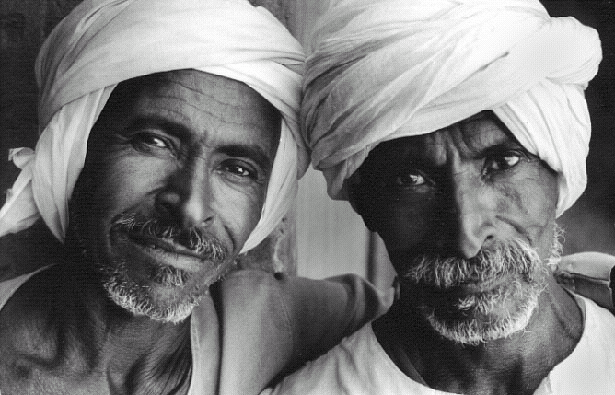|
|
|
The Ababda
& Bisharia the indigenous
inhabitants |
 |
|
The home of the Ababda is the vast
expanse of the Eastern Desert between the Red Sea and the Nile Valley, a
region covering the land from Quseir
in the north down to the Halayeb &
shalateen
the last destination in Red Sea
Governorate, the Ababda have been nomads, wandering through the desert
with their flocks of sheep and goats. They were always on the move,
looking for water and food for their animals. They have no permanent
settlements, they live in shoddily assembled wooden shelters which they
simply leave behind when they move on, building new ones at the next
place. |
|
In the past they made all the
items for their everyday life themselves: pots and dishes and simple
tools made of stone and wood, baskets woven from the roots of desert
plants, harnesses and saddles for the camels.
|
|
The women would gather herbs to
cure illnesses and spin wool which they then wove into coarse fabrics
with simple patterns to cover the walls of their shelters. As a result
of their life in the desert the Ababda developed features which are
common to all nomad people: indifference toward material things,
hospitality, respect for nature, self-sufficiency and tribal solidarity.
The Ababda are the main indigenous
inhabitants of the PA. They are descendents of the Begga tribe, and are
among the first peoples to inhabit the desert between the Red Sea and
the
Nile
River.
Since the 1st century of the Islamic Hijra, They entered Islam and
merged with A rab tribes Ababda are divided into four tribal groups:
ALGamilia, AL-
Fokra'a- M ilkab, Abodeen- Shanateer, and A I- A shabab. The Ababda
have their own traditions, habits, and cultures that are different from
other
Eastern
Desert
tribes. Grazing is the Prime
Profession; they shepherd camels, sheep, and Goats.
They also collect plants for
food or trade. They are famous for their charcoal made from The
trees of region. Hunting is not a main profession, but a clever hunter
is Considered an important man. They use only a few hunting tools such
as traps, stones, and trained. They are nomadic, seeking areas with
recent rainfall and good pasture. their dwellings are small temporary
structures called '' Khisha''. They use tree branches to build the house
and cover the frame with cloth and wool. Houses are built on relatively
high at the wadi edge to avoid sudden floods. Women build the houses,
and each house is considered their private property. |
|
and as guards in the mines in the area. At
the mouth of the valley, there are two families working in fishing and
tourism. In the Hamata area, especially on the coast at Mastora and
Qulan, there are 20 families (AI- Okda, AI- Kamilab, A I- Nafi, and A l
–Kergab ) working in fishing and tourism . there are few families (
kergab) in wadi Rada working in grazing and making charcoal next to Rada
Well |
 |
  |
|